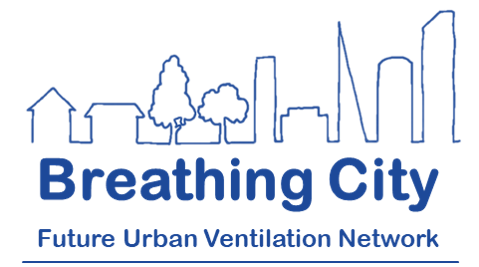On Monday July 17 2023 our theme 2 leads, Henry Burridge and Abigail Hathway, hosted a workshop titled ‘Health Effects of Building Ventilation’ in Westminster, London. The workshop brought together building and ventilation engineers, epidemiologists, clinicians, toxicologists, public health professionals and built environment experts to identify and develop ideas and solutions that will make a difference to indoor air quality and health outcomes.
Professor Sir Stephen Holgate set the scene for the workshop highlighting the wide variety of expertise and skills in the air quality community, celebrating the involvement of young people, early career researchers and professionals in the air quality movement. The air quality community is embracing the challenge ensuring climate factors feed into holistic solutions, as well as the consideration of vulnerable groups and equality.
To further set the scene, the participants were asked “what’s new in the indoor air and ventilation world?“. It was widely agreed that indoor air quality is now moving up the national agenda following the CMO report (amongst others), but it must be balanced with the cost of living and climate crises.
Prof Cath Noakes said “The indoor air quality community is in a strong position to build an evidence base to help balance these priorities by sharing data and increasing the monitoring infrastructure capabilities”.
The challenges associated with improving indoor air quality were also discussed, including (i) what exactly are people exposed to? (ii) how can we build an evidence base to make policy recommendations? (iii) how many pollutants are there and what should we be recording? Participants were keen to highlight the importance of pollutant source control (alongside building redesign and ventilation) which requires engagement with the product industry and regulatory bodies to support them in reducing emissions in the first place. Participants were also excited by the opportunities to link sophisticated indoor air quality data collection to health data to better quantify the health impacts of ventilation.
Other opportunities for research that would make a difference to measure air quality and health were also discussed in focus groups. Some of the topics covered included:
- Considering benefits of home insulation on indoor air quality, climate, and health (suggestion to refer to New Zealand study on immunological benefit of residing in warmer homes, achieved through better insulation, despite potential reduced ventilation capacity)
- Considering the relationship between energy efficiency, EPCs, and health. Is there an opportunity to update the EPC system to include health and indoor air quality? Is there an opportunity to engage with the new Building Safety Regulator team?
- Considering the relationship between source control interventions and ventilation interventions
- Opportunity to identify data gaps for (e.g.,) different groups of society exposed to poor air quality, or different building typologies that experience poor air quality.
- Opportunity to bring existing (short and long term) data together to build emission inventories and cross compare indoor air quality data with health data and behavioural data.
- Opportunity to classify indoor air pollutants and set indoor air quality targets/limits. This would enable classification of what is harmful and what is acceptable. It is not necessary to completely eradicate all airborne species.
- Opportunity to better engage with the commercial market for indoor air quality (e.g., air fresheners, cleaning products, gas stoves) to gather data on what is in people’s homes (in terms of sources and removal)
- Take lessons from the French Observatory
Following these discussions, several themes emerged. These were:
Data
- Appointing a ‘Data Champion’ to promote the combining of robust data from health, environmental (air quality), and social studies.
- Realise the potential for open access data and data-quality control.
- Enable measurements for cross collaboration, an emissions inventory, synthesis of findings, and ranking of pollutants.
Dissemination and messaging
- The community needs to develop the right narrative to focus on the “why” that can be translated for appropriate messaging for the public, policy, industry clinicians, engineers and beyond
- Engagements with social scientist and communications experts will support this goal and open another avenue of research council funding opportunities.
Industry
- Engagement with industry is critical from an early stage and can begin with trade body engagement and larger businesses.
Net Zero
- Ensure the air quality community are onboard and kept informed about the Net Zero strategy to enable air quality solutions to complement these interventions.
Next generation
- Opportunity to provide training and support the creation of interdisciplinary networks for knowledge mobilization and effective dissemination.
- Need to engage with funding bodies to ensure sustainability of financial support.
The group also considered the most effective immediate priorities for the community; such as developing a narrative to provide consistent guidance and advice, being in a position to rank pollutants to take action in tackling the most harmful, and to prioritise reporting on the economic impacts to enhance funding opportunities.


